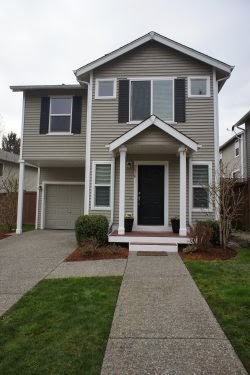If you have any questions or need an assistance in listing your home please don't hesitate to call 800-915-9174 or email.
Listing Price: $250,000
Commercial office space includes four work stations, a four line telephone system, built in cabinets, filing cabinets, and an updated bathroom. Perfect for a small business. Turn-key ready! Could also be a studio by adding a shower and kitchen.
Listing Price: $1,230,000
Listing price: $550,500
Sale Pending in 3 days
2 Bedroom 1-1/2 Bath split level home. Original Hardwood floors, Bay windows with view of Puget Sound All major appliances, Home in great shape on a large lot
Listing price: $259,000
Nice Lk Stevens home on a quiet street with cul-de-sac, large park and wetlands. Home has open concept floor plan, spacious master BR and large walk-in closets, 2 more bedrooms and 2 full baths. This is a certified green property w/ energy saving features, including Bryant 90 HE gas forced air heating system and tankless water heater (no costly baseboard heaters!!), new no VOC paint and extra insulation. All appliances are included. Fenced yard, ADT security system. A must see!
Listing price: $569,000
Sale Pending
Quiet, on a dead end street, view of Forest Park, multiple decks, large private fenced back yard, attached garage, pool/recreation room, lots of light, large kitchen. One block to Lost Park which has tennis courts and play structure for children. Good school district.
Listing Price: $695,000
Wonderful home in the highly sought after neighborhood of South Cove, blocks from Lake Sammamish. The house has many recent updates including the back yard, sport court and amazing great room with gourmet kitchen. The house has three bedrooms with a large open lower level and tons of storage. Great house for entertaining with the open dining/kitchen/family room area. Fully fenced yard great for kids/pets and sprinkler system.
Listing Price: $ 355,000
Beautiful 3 bedroom 2 bath rambler home completely remodeled. Sits on a large lot with lots of backyard privacy. Large front porch overhang, spacious living room with bamboo flooring and stunning fireplace. Kitchen is remarkable with Cherry cabinets, granite counter tops and beautifully tiled floor. Master Bdrm has private full bath. All new plumbing, and electrical system. 2 storage sheds. Lot size .39 acre and has lots of possibilities. RV parking. Located near shoreline schools.
Listing Price: $319,000
Sale Pending
Beautifully remodeled single level home. Min. to downtown and Springwater trail. 3 bdrm,1.5 bath, new kitchen w/ ss appli, recessed lighting, hardwoods/ceramic tile, slab granite kitchen/bath, new int/ext doors, new windows on main/bsmt,upgraded
electrical, 1200 sqft part. finished bsmt,new wood stove,hot tub,low maint. landscaped yd, wonderful neighbors, peaceful neighborhood.
Sales Price: $320,000
Sale Pending
Great location! One-owner, SFH with DEN, 5-pc master bath, walk-in closet, linen closet, laundry room, laminate entry, built-in microwave and tons of storage, 2-car attached garage plus amenities incl. pool, hot tub and weight room in cabana. All appliances stay. Low maintenance yard, rear fenced yard with patio, on bus line, 15 minutes drive to Seattle or Bellevue. Fairwood Shopping Ctr short walking distance. Nearby parks; lakes; golf; walking, biking,and jogging trails.
Sales Price: $680,000
Sale Pending
Great location! One-owner, SFH with DEN, 5-pc master bath, walk-in closet, linen closet, laundry room, laminate entry, built-in microwave and tons of storage, 2-car attached garage plus amenities incl. pool, hot tub and weight room in cabana. All appliances stay. Low maintenance yard, rear fenced yard with patio, on bus line, 15 minutes drive to Seattle or Bellevue. Fairwood Shopping Ctr short walking distance. Nearby parks; lakes; golf; walking, biking,and jogging trails.


















